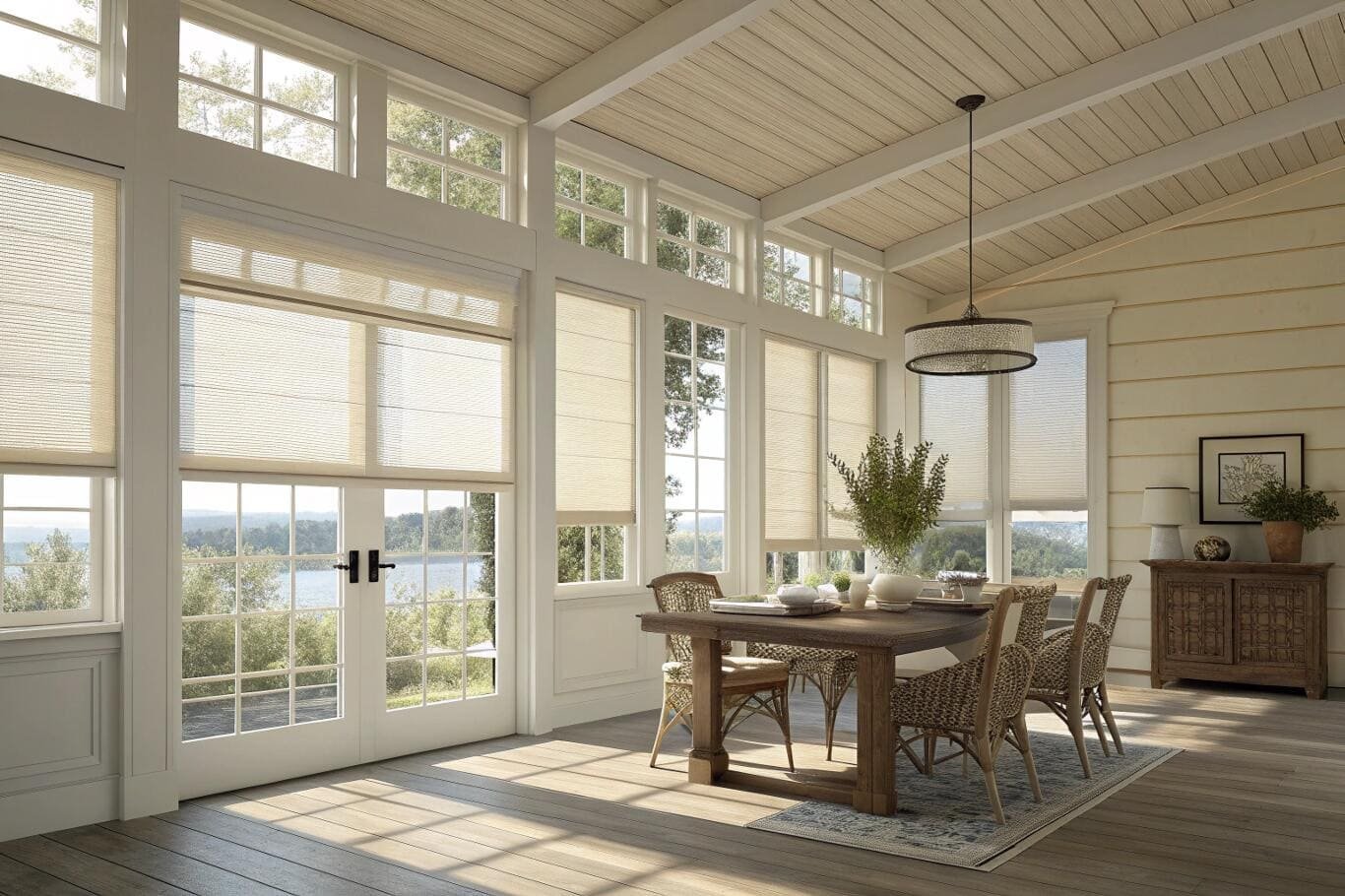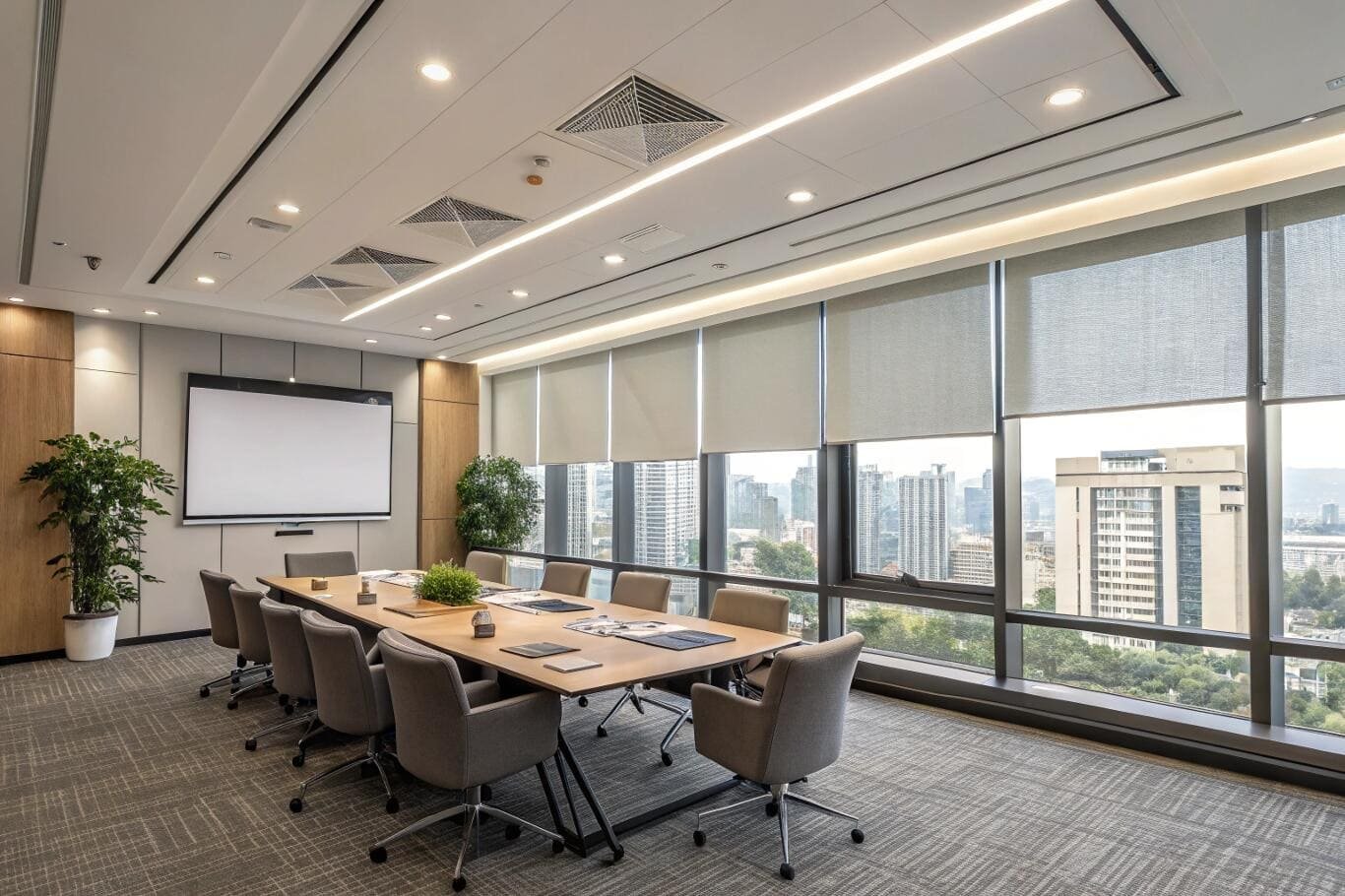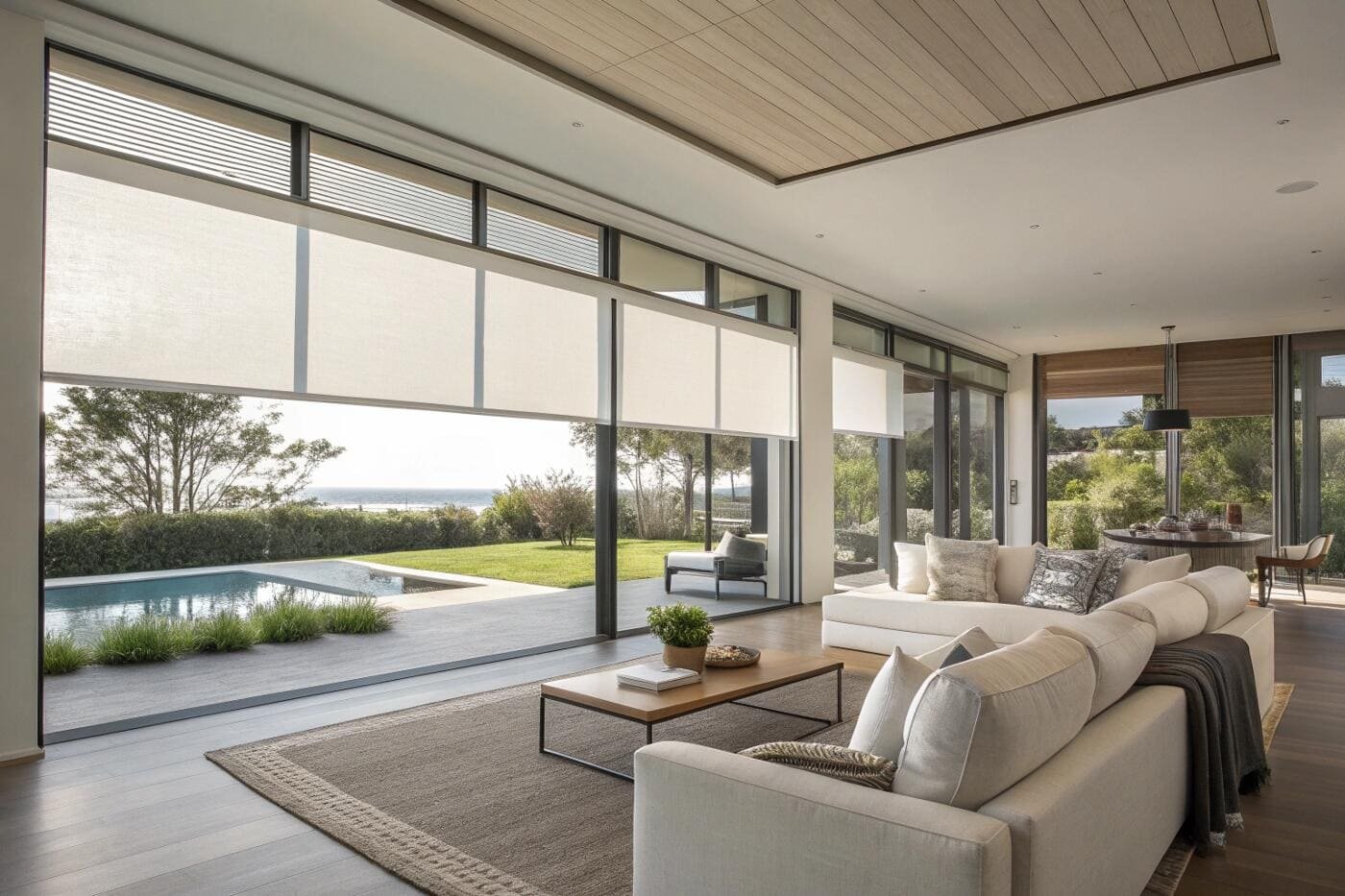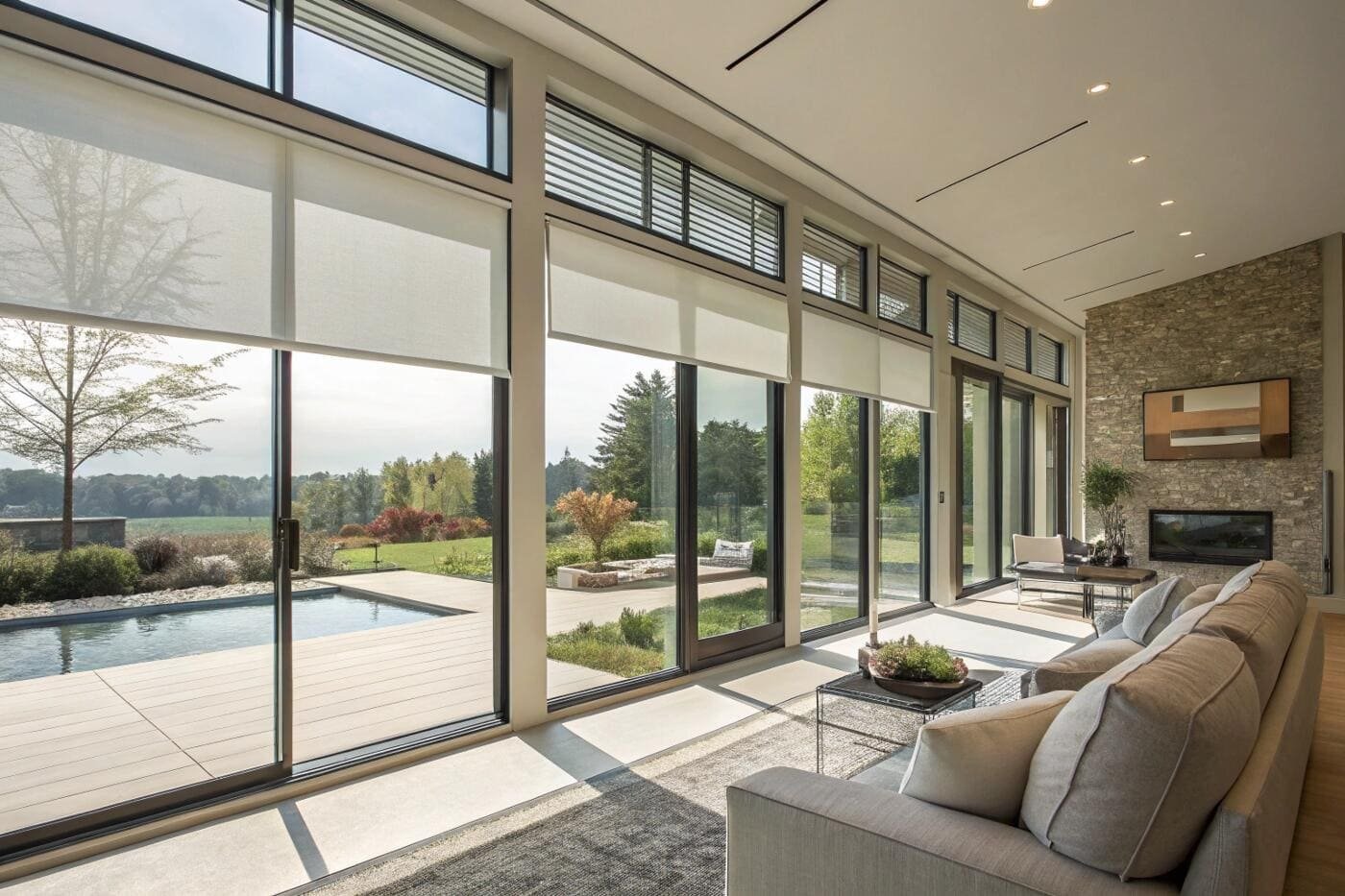You love how your new solar shades[^1] look, but you worry if they'll last. Fading and wear can ruin a great design and feel like a wasted investment.
High-quality solar shades[^1] can last 10 to 15 years. Their lifespan depends on using UV-resistant fabrics[^2] and performing simple maintenance[^3]. While some fading[^4] can occur with darker colors over time, choosing the right material at the start is the key to long-lasting performance.

As a long-time supplier in the window treatment industry[^5], I get asked this all the time. My clients—project contractors and designers like Emma—need to guarantee a certain level of quality. They can't afford to install a product that looks worn out in just a few years. The good news is that modern solar shades are built to last. Let's break down what you need to know to ensure their longevity.
How long do solar shades last?
You're about to invest in new window treatments. But you are worried they might need to be replaced in just a few years, costing you time and money.
With proper care, a quality solar shade should last between 10 and 15 years. The final lifespan depends on fabric quality, the intensity of sun exposure in your climate, and consistent maintenance.

When I source products for VelaBlinds, durability is one of my top criteria. A 10 to 15-year lifespan is a realistic expectation for a well-made shade. However, several factors can affect this. First is the material itself. Cheaper, non-certified fabrics will break down much faster under constant UV exposure. Second is the climate. A shade in a south-facing window in Arizona will be put under more stress than one in a north-facing window in Seattle. Finally, installation quality[^6] matters. A poorly installed shade can experience uneven tension and wear, shortening its life. For my partners, I always recommend professional installation and fabrics with a proven track record. This ensures the end client gets the full value and lifespan from their investment.
Do solar shades fade over time?
Your windows get a lot of direct sun. You’re concerned that the very shades meant to block the sun will fade and look old before their time.
Yes, some solar shades can fade, especially darker colored fabrics. The best way to prevent this is by selecting high-quality, UV-resistant fabrics[^2] like those made from vinyl-coated polyester or fiberglass, such as Textilene[^7] or SheerWeave[^8].

It’s a bit of an irony: the dark fabrics[^9] that provide the best glare control[^10] and clearest views are also the ones where fading can be more noticeable. Lighter fabrics reflect more heat and light, so any color change is less apparent. However, material science has come a long way. I make it a point to source fabrics designed specifically for UV stability. Brands like Textilene and SheerWeave are industry standards for a reason. They infuse UV inhibitors directly into the fabric's coating. This technology acts like a permanent sunscreen for the shade, protecting the color pigments from breaking down. When advising a client, I explain that investing in a certified, UV-stable fabric is the single most important decision for ensuring long-term color fidelity and performance.
What are the disadvantages of solar shades?
You've heard all the benefits, but you're skeptical. You know there must be some downsides to choosing solar shades for a project.
The two main disadvantages of solar shades are their lack of nighttime privacy[^11] and their limited insulation. When it's dark outside and your lights are on inside, people can see in. They also don't trap heat as well as other shade types.

Transparency with my clients is everything. Solar shades are fantastic, but they are not the right tool for every single job. The privacy issue is the most common concern. During the day, they work like one-way mirrors. You can see out, but others can't see in. At night, this effect completely reverses. For a bedroom or a street-level bathroom, this is a major problem. The second trade-off is insulation. Their woven design is meant to be open to preserve the view, which means they don't have the air-trapping pockets that make cellular shades[^12] such powerful insulators. They are great for managing solar heat gain in the summer, but they do very little to prevent heat loss in the winter. Knowing these limits is crucial for placing them in the right rooms.
Are solar shades worth it?
Solar shades are a significant investment for any project. You need to know if the cost will truly pay off in performance and client satisfaction.
Absolutely, solar shades are worth it for rooms where blocking sun glare and UV damage is a priority, all while preserving an outside view. They protect furniture from fading and can lower cooling bills, providing real long-term value.

I tell my partners to think of solar shades as more than just a window covering; they are part of the building's performance system. The value is clear. First, they act as a guardian for the interior, stopping the UV rays that fade expensive hardwood floors and furnishings. Second, they deliver significant energy savings[^13] by blocking solar heat gain, which reduces the load on air conditioning systems. Third, they enhance the quality of life in a space by cutting uncomfortable glare without sacrificing the connection to the outdoors. The key to unlocking this value is choosing the right openness factor[^14].
| Openness % | View Clarity | Daytime Privacy | Heat Reduction |
|---|---|---|---|
| 1-3% | Good | High | Up to 97% |
| 5-10% | Excellent | Moderate | Up to 90% |
| Over 10% | Maximum | Low | Up to 85% |
For most homes, a 3-5% openness offers the perfect balance.
Which is better, solar shades or cellular shades?
You're stuck between two great options. You're not sure whether solar or cellular shades are the right choice for your specific design needs.
It depends on your main goal. Solar shades are better if you want to maintain your view and control glare. Cellular shades are better if your top priorities are insulation and total privacy.

This is a classic question I help designers and contractors navigate every day. There is no single "better" shade, only the better shade for a specific room. I break it down for them like this: Choose solar shades for common areas like living rooms, kitchens, and offices where you have a view you want to protect. They are perfect for managing the daytime environment. Choose cellular shades for bedrooms and media rooms. Their honeycomb structure, which traps air, provides far superior insulation against both heat and cold. This can lead to noticeable energy savings year-round. They also offer "top-down/bottom-up" options and complete light-blocking capabilities, which are ideal for spaces that require absolute privacy and darkness. You don't have to choose one for the whole house; a mix-and-match approach is usually the smartest solution.
Are solar shades easy to clean?
Life is busy, and your clients want low-maintenance solutions. You're worried that complex cleaning requirements will make solar shades an impractical choice.
Yes, solar shades are one of the easiest window treatments to clean. A simple and light cleaning routine[^15] is all it takes to keep them looking fresh and functioning perfectly.

The materials used in solar shades—typically vinyl-coated polyester or fiberglass—are specifically chosen for their durability and ease of care. They are non-porous and slick, so dust and grime don't cling to them easily. I advise my clients to follow a simple maintenance schedule. About once a quarter, use a vacuum with a soft brush attachment to gently go over the fabric. This removes any loose dust. For any spots or smudges, just use a cloth or sponge with a bit of mild soap and lukewarm water. Gently wipe the spot, rinse with a clean damp cloth, and let it air dry. The one thing to always avoid is harsh chemical cleaners or abrasive scrubbers. These can damage the fabric's protective coating and shorten the life of the shade.
Do solar shades help in the winter?
You know solar shades are champions against the summer sun. But you wonder if they offer any benefit during the cold winter months.
Solar shades provide minimal insulation against the cold. However, they are still very useful in the winter for cutting glare from the low-angle sun and providing essential daytime privacy.

I always want to set clear expectations. If your primary goal is to add a major layer of insulation to fight winter chill, a cellular shade is a better choice. However, that doesn't mean solar shades are useless in the winter. The sun sits lower in the sky during winter, which can cause intense glare, especially in the morning or afternoon. Solar shades are just as effective at managing this winter glare as they are with summer sun. For a truly versatile, year-round solution, I often recommend a layering strategy[^16]. By pairing a solar shade with traditional blackout drapery, you get the best of both worlds. During the day, the solar shade controls glare while letting in natural light. At night, you draw the drapes for complete privacy and an extra insulating barrier to keep the room warm. This two-in-one approach delivers 24-hour control.
Conclusion
Solar shades are a durable, high-performance investment. When you choose a quality UV-resistant fabric and maintain it properly, you get a long-lasting solution that masterfully balances sun protection with your view.
---
[^1]: Explore the advantages of solar shades, including UV protection and energy savings, to see if they're right for your home.
[^2]: Learn about UV-resistant fabrics and how they enhance the durability and performance of window treatments.
[^3]: Find out the best practices for maintaining solar shades to ensure their longevity and performance.
[^4]: Discover effective methods to prevent fading in solar shades and maintain their appearance over time.
[^5]: Stay updated on the latest trends and innovations in the window treatment industry.
[^6]: Understand the importance of professional installation for maximizing the lifespan of window treatments.
[^7]: Explore the benefits of Textilene fabric in solar shades and its UV stability features.
[^8]: Learn about SheerWeave fabrics and their role in enhancing the performance of solar shades.
[^9]: Investigate the impact of dark fabrics on fading and how to choose the right color for solar shades.
[^10]: Learn how solar shades effectively control glare while preserving your view.
[^11]: Discover the limitations of solar shades regarding nighttime privacy and potential solutions.
[^12]: Compare cellular shades to solar shades and discover their unique benefits for insulation and privacy.
[^13]: Explore how solar shades can lower energy bills by reducing heat gain and glare.
[^14]: Learn about the openness factor and how it affects light control and view clarity in solar shades.
[^15]: Find out how to properly clean solar shades to keep them looking fresh and functioning well.
[^16]: Discover how a layering strategy can enhance the functionality of your window treatments.Partner with VelaBlinds for Your Next Project
Smart window treatments shouldn't be complicated. After working with 500+ distributors and contractors worldwide, I've streamlined the process to get you quality products, competitive pricing, and reliable support - every time.
Why project professionals choose VelaBlinds:
- ✅ Fast, Accurate Quotes - Detailed specs and pricing within 24 hours
- ✅ Transparent Pricing - No hidden fees, volume discounts clearly outlined
- ✅ Quality Assurance - Direct partnerships with certified OEM manufacturers
- ✅ Project Support - Dedicated account manager from quote to delivery
Start your next project:
📧 Quick Quote: Send your requirements to info@velablinds.com
📱 Direct Contact: WhatsApp +86 137 2012 8317
🌐 Browse Solutions: https://velablinds.com/
📁 Product Resources: Access spec sheets, catalogs & project files
Paul Chen, Founder
"I built VelaBlinds to solve the real challenges I faced as a project buyer - long lead times, unclear specs, and unreliable suppliers. Let's discuss how we can power your projects with smarter blinds."
Serving distributors and contractors across North America, Europe, and Australia since 2018.




